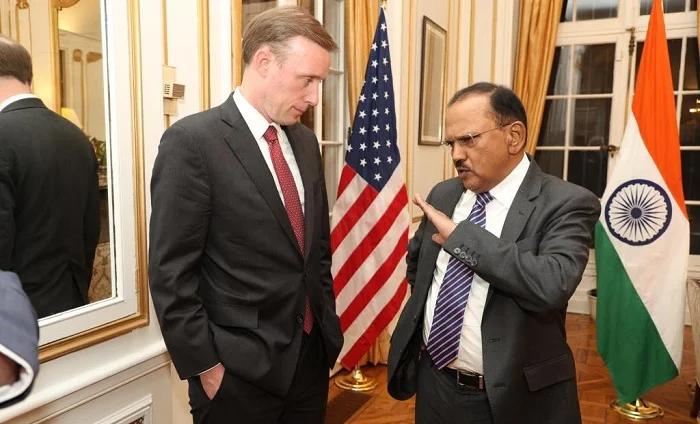Can this really bring benefits to India?
According to Reuters, citing people familiar with the matter, the Biden administration in the United States is considering cutting off all ties between American suppliers and China's Huawei, prohibiting US suppliers, including Intel and Qualcomm, from providing any products to Huawei.
The US side is still actively soliciting people into the group. After reaching a "mysterious agreement" with the Netherlands and Japan to restrict the export of chips to China, the United States approached India. The two sides agreed to cooperate in high-tech fields such as semiconductors.
The U.S. described this as "another major milestone" in U.S.-India relations, and India has the heart to develop in these industries. But can this really benefit India?
Working with India, the United States targets China
After coercing and luring Japan and the Netherlands into restrictions on the export of chips to China, the United States has made new moves. This time, the target of the US attempt to lure in the gang is India.
After a two-day high-level meeting in Washington, U.S. and Indian officials agreed Jan. 31 to expand cooperation in high-tech fields such as defense technology, semiconductors and artificial intelligence, according to The New York Times.
This time, the United States seems generous. In addition to US National Security Adviser Sullivan and Commerce Secretary Raimondo, Indian officials met with Indian officials, as well as American business executives such as Lockheed Martin and Micron Technology, as well as university presidents.

Indian National Security Advisor Ajit Doval and US National Security Advisor Sullivan. Source: Indianarrative
According to the New York Times, according to the agreement reached between the two sides, the United States will work hard to promote India's construction of advanced mobile networks and seek new cooperation in semiconductor production, including helping India strengthen chip research and production, addressing regulatory barriers, and restrictions on visas for Indian talents to work in the United States.
Sullivan told the media that following the nuclear power cooperation agreement reached between the United States and India in 2016, the establishment of the technology partnership will be "another important milestone" in the relationship between the United States and India.
Of course, the United States will never help India's development in semiconductors, artificial intelligence and other fields for no reason.
The New York Times mentioned the Biden administration's recent restrictions on China in many high-tech fields such as chips, pointing out that the United States is trying to transfer the manufacture of certain key components from China to India out of consideration of competing with China in these fields. "We have a common purpose here, which is to worry that China will eat our lunch in all areas unless we find areas for cooperation." Richard M. Richard, Senior Advisor, Center for Strategic and International Studies, Center for Strategic and International Studies. M. Rosso said unabashedly.
Relying on the "support" of the United States, India may find it difficult to realize its dream
India has indeed never hidden its ambition to become a global chipmaker and secure a place in many high-tech fields. Only, will the United States provide real help to India's ambitions?
Critics in India argue that the United States is simply trying to undermine China's dominance in areas such as semiconductor manufacturing and lure India into playing the role of regional proxies in the game. Or rather, the U.S. deal with India "seems more like a geopolitical game than a trade agreement."
Abinaw Kumar Sharma, a professor of operations and data science at NMIMS University in Mumbai, India, also pointed out in an interview with The Diplomat magazine that India is still in its infancy in semiconductor manufacturing. Although the Indian semiconductor industry has developed in recent years and the United States has shown expectations for India, the United States "seems to still have a gap between verbal assurances and written commitments", and there are still many uncertainties in the scope and future of the US-India cooperative relationship. Accepting a partnership with the United States is likely to be accompanied by Washington's dictatorship. What's more, the ultimate purpose of the "Chip and Science Act" introduced by the United States last year is to bring the chip manufacturing industry back to the United States and shape the global chip industry chain with the United States as the core. And India is nothing more than a pawn.
India aspires to gain a foothold in semiconductors. Source: TechwireAsia
For India, if it really wants to find a place, it needs to be down-to-earth in addition to ambition. Pavan Hera, a spokesman for the Indian National Congress party, has previously said that India is likely to be unable to invest in the required funds for complex capital-intensive industries like semiconductors. India wants to upgrade its own chip manufacturing industry, can not hope for the United States "promotion", but should first lay a good industrial foundation. But in any case, its development is inseparable from the close cooperation of upstream and downstream players in the industrial chain in the Asian region, especially with China, the manufacturing hub.
Produced by Deep Sea Studios
Written by Deep Sea Salmon
Edit Deep Sea Otter Deep Sea Pig